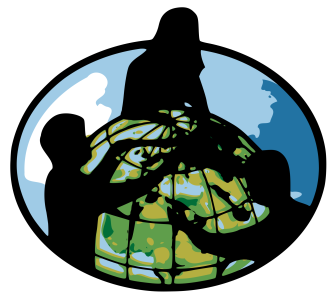It’s Thanksgiving week but, sadly, I’m not with my students (though if I were, I’d be all over this amazing resource about teaching Thanksgiving in a socially responsible way from Teaching Tolerance).
I miss my students. I don’t just miss them for all the usual reasons (they are great), but especially this week when times have been tough. Having to answer why five Americans were shot practicing their right to peacefully protest, listen to their frustrations about why Americans keep accepting Donald Trump’s lies, or help them understand the acceptable rage in Chicago at the continuous deaths of young, black teenagers, all at a time when unrest seems rampant everywhere in the world is not some service I provide my them. My students and I work through these things together, and their questions and thoughts help me process the world today just as I hope I help them.

I’ve been trying to write this for a while, but here’s what I feel at my core: my students save me every single day. In a world where it seems easy to feel hopeless, or to get lost in the darkness of my own thoughts as fed by a global landscape that seems bleak, my students are joy incarnate. Seeing them grow and challenge the world around them makes me feel like, maybe, someday, the needle will move. Or maybe it reminds me that they’re moving the needle right now.
Even when I am not happy, I am still joyful, because I know my students have the potential to set the whole world on fire.
The thing is, gratitude, hope and joy are mindsets that need to be fostered with as much care as we give to “collaboration” or the oft-misused “grit.” Gratitude doesn’t just make us happier, as reported by The New York Times, but that kind of emotional resilience can help all of us continue to do the work.
Choosing to be grateful for what we have now helps us reflect on the power of the greater good. In valuing that, we can still find hope that things will continue to move towards goodness and the long arc that bends towards moral justice, as Dr. King taught.
In that hope, there is joy. Even when we are mired in tragedy and sorrow now, our joy lives in knowing that we can do our best to ensure that the next generation will have better. That joy is our fire and the greatest weapon against quietly letting societal injustices continue unchecked.
Here’s the thing: those seeking to silence the voices of students and communities want us to lose hope. They want us to quietly accept the status quo about how we treat and teach children and communities from traditionally oppressed backgrounds. They want us to give up.
We can’t let that happen. We need to help students not just process the darkness in the truth but see the hope in their own potential as well. That means making active choices to be grateful, hopeful, and joyful, even when the cards feel stacked against us.
As we roll into the holidays, I’m committed to try and ensure my classroom is not just focused on justice and truth, but hope as well. Here are the choices I want to make:
- Teach and practice gratitude, even when discussing difficult events. Just acknowledging, “I’m happy we can talk about this as a class” is a positive start. Edutopia has some great starter activities that I want. I am also thinking of remixing the “Where did this come from?” activity and combining it with an activity I did on activism. Asking students to reflect on resources and rights that inspire them now and ask, “Who helped us get there? Who’s helping us move forward?” could be a great start.
- Connect students to people outside their normal scope of influence. As Xian Franzinger Barrett shared last week, we need to tap into the potential our students have to make change. Connecting students to stories of or, even better, the actual voices of those who are working towards change can inspire them and help them find hope when times seem tough or the world’s problems feel insurmountable. The Atlantic has an excellent piece on high school activism and Chicago’s VOYCE (Voice of Youth in Chicago Education) project.
- Seek joy always. ASCD has some great ideas and activities around this. I love the idea purposefully of giving students choice and taking them outside. Mostly, though, I want to remember to consistently seek to be joyful in my classroom. Laugh heartily and mightily when they are their hilarious selves. Celebrate when your students let their awesomeness show. Teach them to celebrate each other. Teach them to celebrate themselves.
As we’re a few days away from Thanksgiving, I hope you’re able to take a second to be grateful and recharge to do this work. I encourage you to not just take them time for yourself, but also give students the space to do this as well. The choice to find gratitude, hope and joy in these times is hard, but they are ultimately the greatest weapons we have to make change.


